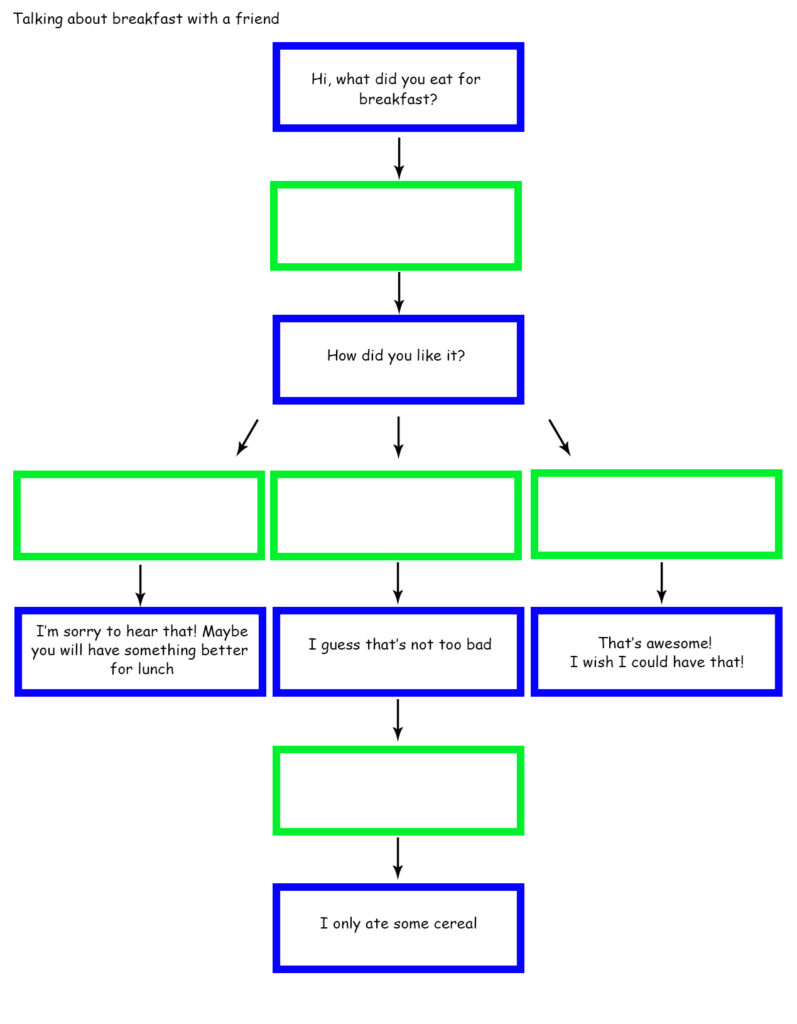Over Fall Break, Gillian continued to contact high school teachers across a wide variety of subjects and ended up surveying several English teachers, a calculus and statistics teacher, and a design teacher about potential uses of our tool and what features would be most helpful to them. We got some interesting insights with most of the teachers not really agreeing on specific features being useful. However, after discussing all of the feedback as a team, we have decided that providing blank dialogue template options for students and teachers would be a good medium for all of the teachers’ differing needs.
We kicked off the week by attending the playtest workshop on Monday and collecting peer feedback on our project’s direction. While most of the feedback was expected, the team found it was helpful drawing out the stakeholder relationships of our project as students must take on the role of both a designer and a player.

The majority of the week was focused on preparing for Playtest Day. The team began by brainstorming what we wanted to know from these playtests and decided that we wanted students’ opinions on the process, use cases, and ease of understanding a dialogue tree. From there we went through the practical limitations of our project. Chenguang is still working on the editable dialogue node system, so we needed a test that was simpler than users creating 100% of their own dialogue and templates with non-editable templates. Additionally, we only had 18 minutes per batch of playtesters. The team ended up coming up with the idea to give users a partially filled out dialogue tree where they could write player response options and enter those options in our Roblox tool.
Playtesters will complete the playtest by getting a brief description of the dialogue tree and the intent of our project. Then, playtesters will be given a paper template of a dialogue tree for them to fill out. When playtesters complete the paper template, they will fill out an identical digital template in Roblox. After filling out the digital template, playtesters can talk to an in-game NPC and have the conversation that they had written. Playtesters will finish out the playtest by taking a brief survey asking them about their experience with the process of using our tool and preferences for future use.
To prepare for this playtest, our team split responsibilities for the week. Rohit, Anlan, and Lyn were responsible for piecing together an appropriate scene template. Xiao created several dialogue templates for us to choose from for the playtest. Chenguang developed a specific build with a partially complete template for playtesters to fill out. Gillian made the introduction, survey, and schedule for the playtest.


In addition to planning the playtest, our team also spent some time developing the product and planning our pivot to the Latin demo as Gillian continued surveying more teachers and Rohit worked on the saving and loading feature.
